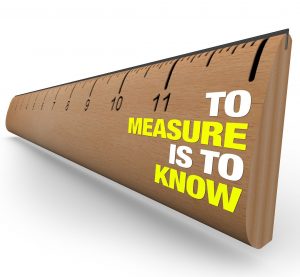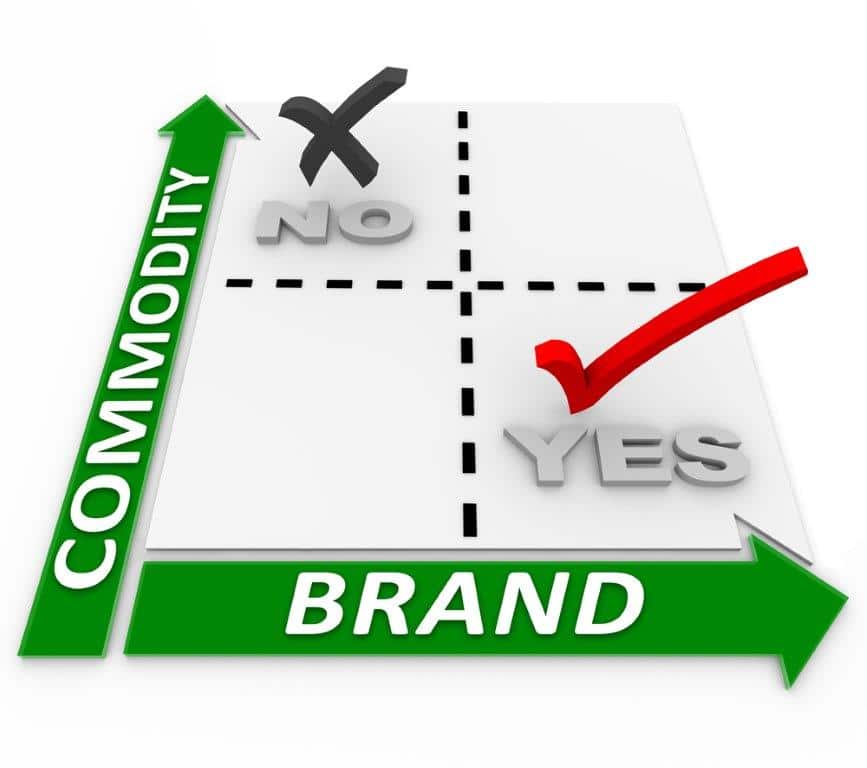 We are international speakers on entrepreneurship. We’ve spoken it more than 50 schools teach entrepreneurship internationally. We’ve also given more than 50 keynotes to large industry conferences and summits. One of the questions we often get is, “Do we need a new definition of entrepreneurship?”
We are international speakers on entrepreneurship. We’ve spoken it more than 50 schools teach entrepreneurship internationally. We’ve also given more than 50 keynotes to large industry conferences and summits. One of the questions we often get is, “Do we need a new definition of entrepreneurship?”
The word “entrepreneur” has had different definitions since its inception. In 1734, it first appeared in the book Essay on the Nature of Trade in General by the Irish-French economist, Richard Cantillon. He used the term to define a “risk-taker,” or a person who buys a product at a known price and sells it at an unknown price.
Over the years, that narrow definition has been expanded and modified, evolving to include other aspects such as planner and innovator. Other hallmark characteristics entrepreneurs exhibit are resourcefulness, leadership and creativity. They take risks in an attempt to make a profit and commercialize their innovation.
Today the term has been extended and diluted to cover just about anyone who is in business and therein lies the confusion. “Entrepreneurship” has become an umbrella phrase covering any type of business from franchisee to merchant, from shop owner to restaurateur, from broker to independent agent, from professional service providers to multilevel marketers, and from start-ups to giant corporations. Certainly, they all take risks. They all seize upon opportunities. They all commercialize.
So where do we make the distinction that sets certain types of businesses apart under a new and more refined definition of entrepreneurship? We think there are certain characteristics of the business model that can help put the definition of entrepreneur back on track.
We think the term “entrepreneur” should be reserved for brand builders. These folks endeavor to add value to a new branded product or service through marketing, sales and distribution. They work toward developing a positive reputation and brand image that results in a loyal clientele. They have the potential to monetize that brand equity through such capital events as mergers, public offerings, or acquisitions.
They differ from those whose interest is self-employment, creating an income, or pursuing a profession. They are more about creating brand value which requires constant reinvestment in growth at the expense of immediate profits. They have a tolerance not only for risk, but for deferred gratification because the real payback is the monetization of their brand equity.
The “brand builder” definition of entrepreneur introduces an over-riding strategic approach to business. Brand builders are always looking ahead and planning for the day they may be acquired. They are constantly focused on the end game, whether that may be two years or twenty years. Here are the questions that brand building entrepreneurs must answer to distinguish themselves from merchants.
1. Purpose: “Why am I going into business in the first place?”
This seems like an obvious first place to start for anyone going into business. But we never cease to be amazed by how many entrepreneurs have never gotten past answers like, “I’ve always wanted to be my own boss”, “I have a passion for this business”, or our favorite, “I’m going to get rich!”
Some entrepreneurs say, “I want to create a legacy. I want to leave it to my kids and they will support me in my old age.” Well, good luck with that. Most business heirs sell their parents business within a year of their passing.
But some entrepreneurs say, “I want to build and monetize my brand equity.” These are the true entrepreneurs. They are building something that didn’t exist before with the express purpose of transacting the business for its value. This is a very different business model from the mercantile business models where achieving a positive cash flow is the main goal.
Many entrepreneurs say they want to get paid for their ideas. But in order to be paid for your idea, you must wrap it in a product, wrap the product in a business, wrapped the business in a brand, and grow the brand to the point at which it becomes an acquisition target. Then sell it and get paid for your idea. Businesses buy businesses, not ideas, concepts, or unproven products.
Once you decide that you are building a business to sell it, your course is pretty well determined by the reality of the requirements necessary to do so. Now you are looking at everything differently. It’s not just making a profit. Now it’s building a brand! And more specifically, building brand equity!
2. Scalability: “Can my business be scaled?
 You have to have some kind of a product that can benefit from increased production, sales, and distribution. You don’t have to be everywhere, but, where you are, you have to be a hot mover! The acquirer has to be able to multiply your proven success.
You have to have some kind of a product that can benefit from increased production, sales, and distribution. You don’t have to be everywhere, but, where you are, you have to be a hot mover! The acquirer has to be able to multiply your proven success.
These days the good news for entrepreneurs is that with the consolidation of production and distribution, and with the strict divisions of labor and specialties within the large corporations, the brand building entrepreneur has a much greater chance of being acquired, especially if they can demonstrate a market for their branded product.
Large companies are great at scaling because they control distribution, have efficiencies of scale in production, and a market presence which enables them to add new products as line extensions. But it is that same specialization that leads to siloing, turf wars, excessive compliance, which often results in the suppression of new, disruptive, or otherwise “risky” ideas. They’re so big and have so much to lose, they want to play it safe. Their thinking goes something like, “Let someone else take the gamble, do the missionary work, develop a market. We can always buy them out and bolt them on later. It’s cheaper than doing it ourselves (and less risk!).”
The bad news is that that same consolidation has made it much more difficult to penetrate the market to demonstrate the demand for, and marketability of, your product. However, if you can access the market and demonstrate your viability you can build your brand to the point that it will get noticed.
3. Auto Pilot: “Can my Business run without me?”
This is where the trend toward personal branding runs in to a wall. Sure, you need to have a personal brand, but it’s generally not scalable. Single service providers benefit from the personal branding of their own name, but unless the service or the product they provide can be done by others, their business in their name can’t be scaled.
Your acquirer generally wants to bolt on your products and services to their existing range. The name of your brand should be a name that stands alone. We have seen commercial brands named after their founders, and even sell, but their founders are usually prevented from using their own names to compete.
The bottom line is that most acquirers want to acquire brands that can run without their founders. Generally, they want to view the investment as self-sustaining enterprise, unhampered with the day- to-day management of the founder. Basically, “We’ll take it from here!”
This is why brand building entrepreneurs must focus on setting up written policies and procedures that can eventually run their businesses without them.
4. Prospect: “Who’s going to buy this business and why?”
The first question we ask our clients is, “Who’s going to buy your brand and why?” Brand builders with commercial products know their industry is being consolidated. They know who the big players are. They should also know how their offering fits into the portfolio of an acquirer.
The big players are acquiring brands for strategic reasons. They either fill a gap in their portfolio, give them an advantage over a competitor, or even eliminate a competitive brand through acquisition.
These are quite different reasons than going into business because it’s your passion, you’ve always wanted to do it, or you want to be the boss. These may be the reasons for the acquisition of a merchant’s shop but not a brand builder’s brand.
5. Preparation: “How can I organize my business from day one to satisfy an acquirer’s Due Diligence?
The financial planners are all over entrepreneurs on this one. They even call it “exit strategy planning.” But their advice and services generally are more suited for merchants than commercial brand builders. They tend to be selling annuities, savings programs, insurance policies, and legal services, and, rather than preparing a company for acquisition.
They all assume there is money to spend and they want to help you spend it. But what if there’s not? What if you put every dime back into growth to get your business to the point that it becomes an acquisition target? Our concept of “Exit Strategy” differs significantly from the financial planners. We are more concerned with how you are preparing to attract and close that acquirer.
In most cases the longer it takes to close an acquisition the less money the seller will make. Why? Because delays in the due diligence period allow time for the word to get out. Your employees will jump ship looking for “secure” employment. Your sales managers will take your buyers with them. Your buyers will want to reduce or suspend their purchases to wait and see what the new owner’s prices and quality look like.
Brand building entrepreneurs who hope to monetize their brand equity will prepare for acquisition on day one. Their filing system will be a reflection of their potential acquirer’s due diligence. Not just the sales, personnel, and financial records, but little details like an artist sign off on a logo can slow down the due diligence process and allow the word to get on the street. Every contract, dispute, or agreement needs to be carefully kept as the entrepreneur proceeds along the path to acquisition. The entrepreneur must do everything possible on their end to accelerate the closing process if and when it happens.
6. Metrics: “What numbers do I have to achieve to be an acquisition target?”
 Entrepreneurs hoping to one day sell their brand, must understand the metrics achieved by the last brand that sold in their category and at their price point. We often recommend that our clients go to lunch with the business broker in their industry every year.
Entrepreneurs hoping to one day sell their brand, must understand the metrics achieved by the last brand that sold in their category and at their price point. We often recommend that our clients go to lunch with the business broker in their industry every year.
This is their opportunity to find out what these metrics were and what the implications are to their brand. How many units were they selling when they were acquired? What was their annual gross revenue? What was their rate of growth year on year? What territories was their brand sold in? And so on.
The answers to these questions will help them quantify their metrics and set their goals. “How big do I have to be and how fast do have to grow, to become an acquisition target?” And, “How long will all that take?” This is a completely different mindset than the merchant or the single service provider. The brand builder is deliberately trying to become an acquisition target.
The real risk of this type of entrepreneurship is not so much the launch, or even getting past the first few years of critical cash flow management. It is the risk that the financial, personnel, and distribution strategies they choose to grow their business will be the right ones.
7. Targeting: “How do I get my peanut in front of the elephant?”
Successful brand building entrepreneurs often choose their acquirers. Rather than waiting for Mr. Big to come knocking on their door, they do everything they can to get noticed by their potential acquirers. They may for instance, placed their brand with the distributor that also carries their potential acquirer’s brands. They may achieve an outstanding rate of growth year over year even though the actual numbers are quite small. Or they may identify and market to a new category or a new territory their potential acquirer has yet to address.
Unlike the merchant, all this brand building activity is taking most of what might be called the operating profits. It’s being reinvested to grow and position the brand to be noticed. Brand builders must be willing to defer gratification until after the check clears for the acquisition of their brand.
Many business owners do not fall into this definition of brand building entrepreneurs. They may be in a family business that they inherited and intend to pass onto another family member. Or they may be a franchisee and provided with a formula for running the business. A true entrepreneur will create a business where none existed before. This is where the original definition of risk taker is spot on. And this is why the new definition of entrepreneur should include the term brand builder.



